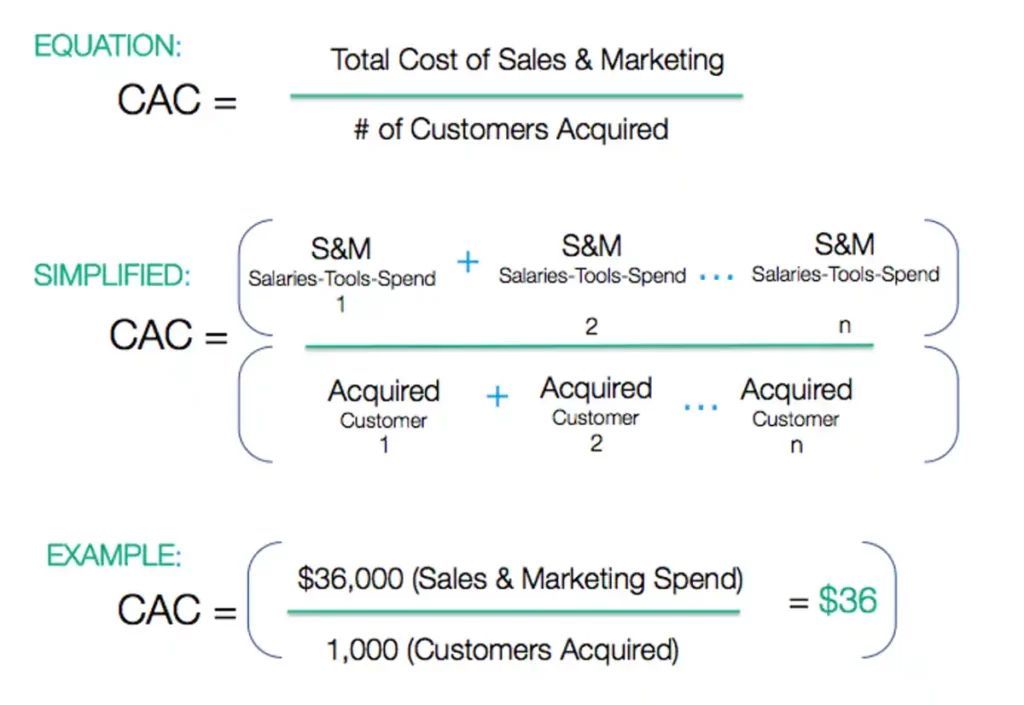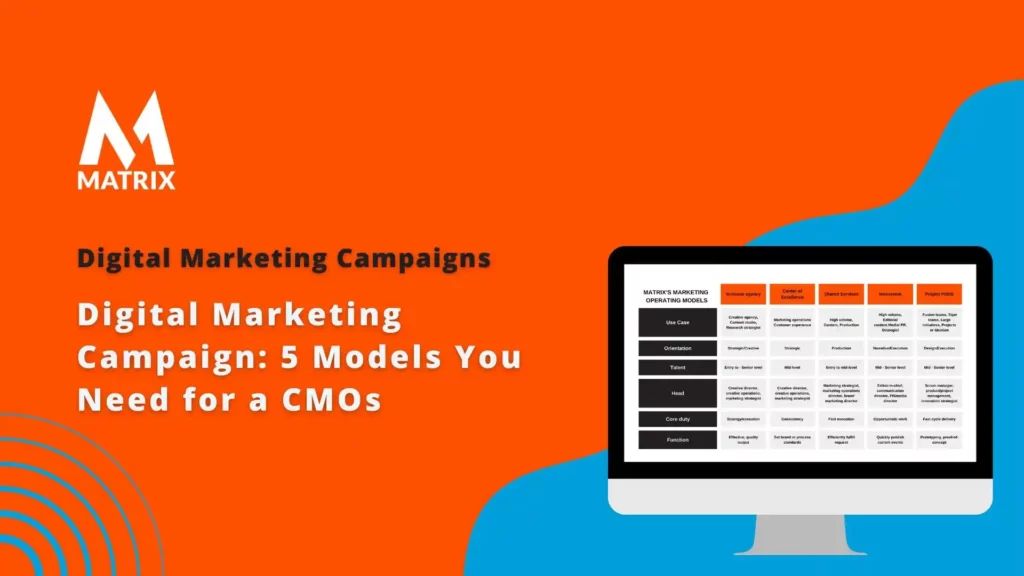Learn These 5 Models You Need for a CMOs Digital Marketing Campaign
A great digital marketing campaign begins with how people react to your products and services. Digital marketing technologies have revolutionized the way brands used to interact with customers.
Here are 5 digital marketing campaigns powered by AI that CMOs must know:
- Personalized content recommendations: AI can recommend content to users based on their past behavior, demographics, and interests. This can help to improve engagement and conversion rates. For example, Netflix uses AI to recommend movies and TV shows to its users.
- Automated social media posting: AI can automate social media posting. This can free up time for marketers to focus on other tasks. For example, Hootsuite uses AI to automate social media posting for its users.
- AI-powered chatbots: AI-powered chatbots can be used to answer customer questions and provide support. This can help to improve customer satisfaction and reduce costs. For example, Amazon uses AI-powered chatbots to answer customer questions about its products and services.
- AI-powered ad targeting: AI can be used to target ads more effectively. This can help to improve click-through rates and conversion rates. For example, Google uses AI to target ads based on user’s past behavior, demographics, and interests.
- AI-powered content creation: AI can create content, such as images, videos, and text. This can help to save time and money. For example, Canva uses AI to create images and videos.
What if digital marketing campaign management, measurement, and integrated digital marketing campaign with lifting a finger?
These are just a few examples of how AI is used in digital marketing today. As technology develops, we expect to see even more innovative and effective ways to use AI in digital marketing.
Here are some of the benefits of using AI in digital marketing:
- Increased efficiency: AI can automate many tasks that are currently done by humans, freeing up time for more creative and strategic work.
- Improved targeting: AI can help businesses target their marketing campaigns more effectively, increasing conversion rates.
- Personalized experiences: AI can help businesses create personalized customer experiences, leading to increased loyalty and engagement.
- Reduced costs: AI can help businesses save money on marketing and customer service.
- Increased innovation: AI can help businesses develop new products and services that were previously impossible.
However, there are also some challenges associated with using AI in digital marketing:
- Data privacy: AI relies on data to train and operate, so it is important to protect customer data from misuse.
- Bias: AI models can be biased, reflecting the biases in the data they are trained on.
- Interpretability: AI models can be difficult to interpret, making it hard to understand why they make certain decisions.
Knowing both the benefits and challenges of using AI in digital marketing is important. With careful planning and use, AI can be a powerful tool for good.
Digital marketing strategies have become a basis for helping businesses connect and influence potential audiences at multiple touchpoints.
The right AI-driven digital marketing program can help you deliver a personalized experience, keep a check on ROI, and navigate your buyer’s journey.
The customer of today wants to research & browse fast. Customers assess brands, and if considerable brand integrity is there, they avail of your services. Customers also expect a personalized content experience from you.
You can leverage all the accumulated data and facts through digital marketing to set a clear goal. You can understand your audience and derive a marketing strategy your business can attune to.
One size doesn’t fit all. There are several proven digital marketing models in the market. However, there is no uniform strategy. Some businesses want to focus on brand building, while others want to enrich the customer experience.
It depends on your company’s goals, internal factors, industry domain, customer segment, etc. One should note that several businesses don’t even use digital marketing for sales. Instead, they use it to boost their brand image and emerge as a solid player in the market.
This strategy involves engaging with customers at every milestone of their buyer journey. Digital marketing can be many things, like building a spotless website experience, high-quality content for influencer campaigns, or nurturing strong customer relationships. AI Agentic Systems for Marketing Healthcare Organizations
What is a digital marketing campaign?
A digital marketing campaign is an online marketing effort put forward by a company to drive engagement, conversions, traffic, or revenue. The campaign aligns with the company’s overarching goals and includes one or more digital channels.
The goal is to close one deal, attract lifetime customer value, and earn loyalty. Digital marketing campaign examples can be seen here.
Why do you need a digital marketing model?
The right digital marketing model can help your business with global reach, personalization, business openness, trackable & measurable results, lower cost, improved conversion rates, and social currency.
Your digital marketing program can adopt a model as it’s a preferred way to structure thinking while drafting marketing plans.
Always remember that not every business leader is the same. In the marketing funnel, you’ll notice that leads present at the top of the funnel shouldn’t be exposed to the same content as the bottom lead is getting.
The right model can provide clarity to opaque business challenges. You can create your marketing strategy around a digital marketing model for your business and effectively plan, optimize, and manage your marketing.
Types of digital marketing campaign strategies I can use to increase my website traffic include using search engine optimization (SEO) techniques, creating content such as blog posts and articles, leveraging social media networks, engaging influencers, and partnering with other websites.
Utilize pay-per-click (PPC) campaigns, email marketing techniques, and banner advertising to drive further traffic to my website. Each of these strategies can be tailored to reach specific target audiences and measure the success of a campaign. By taking the time to research and implement digital marketing campaigns, I can ensure that I am using the best methods to increase website traffic.
Other techniques I might consider include optimizing landing pages for improved user experience and conversion rate optimization
Let’s move ahead and learn about the five most effective digital marketing models and frameworks that can help your business focus on the target audience more effectively than ever:
The Pirate Funnel:
Pirate Funnel comes into the picture when it comes to segregating processes for a better understanding of your company. Entrepreneurs can find Pirate Funnel handy if they don’t know where to start with their digital marketing campaign.
There are six metrics in Pirate Funnel called AARRR metrics. The acronym stands for Acquisition, Activation, Retention, Revenue & Referral. By understanding this, entrepreneurs can gain better insights into each stage of their business.
Acquisition:
This is the first metric in the Pirate Funnel. The step encourages businesses to focus on their growth efforts. The acquisition is similar to lead generation.
Potential users can be acquired from social media, cold outreach, SEM, organic research, banner ads, etc. Acquisition determines the rest of the Pirate Funnel size. AIProdPad Product Development Transformation Through AI-Driven Innovation [White Paper]
Activation:
Activation is when a potential lead tries your company’s product or service offering. This metric marks the first experience of the lead with your product.
This is when your to-be customer starts to see the value your brand offers. If done well, you can have a long-lasting relationship with the customer. One should not mix acquisition with activation.
Under the acquisition, you’re merely solving your lead’s question by providing content, whereas, under activation, you provide a hands-on experience or sample of your product.
Revenue:
When your customer finally pays for your service or product, that is the revenue metric. This is one of the most crucial metrics for marketing campaign success.
The most important metric we consider to be CAC.

The moment your customer starts offsetting their customer acquisition cost (CAC) is when revenue starts coming in. One should understand that it is cheaper to ensure the existing customer stays than to acquire a new one.
When your customers are satisfied, they can be retained for a longer time, and hence, more revenue can be generated.
Retention:
Retention means that your customers are happy with your services and coming back to try your products again. Retention can have different meanings for different business types.
For instance, retention for eCommerce would mean people are buying stuff more than once. At the same time, retention for a SaaS-based company would mean people subscribing to the software repeatedly.
Referral:
Referrals are probably the best way to boost business growth manifolds. The metric works by measuring the number of new users brought by the existing users.
Customers drive word of mouth. Under the Pirate’s funnel, customer referrals are regarded as a blessing in disguise. The psychology is simple: when customers tell their friends about your services, they are likely to try them.
BCG matrix
BCG or Boston Consulting Group matrix is a widely used product portfolio matrix in digital marketing models. The matrix focuses on the analysis of the business unit.
The matrix helps businesses know about their brand management, portfolio analysis and management, product management, and more. It also helps them with appropriate resource allocation. BCG matrix is divided into regions, the first being Cash Cow, Dogs, Question Mark & Star.
Cash Cow:
The cash cows region involves products or companies with a very high market percentage but slow growth.
These companies often generate a higher amount of cash to run their business. Unlike other models providing detailed analysis, the BCG model helps gather a quick overview of your services.
Dogs:
Dogs are the product portfolios that drain your resources. These products or services have a critically low market share and are present in the slow-growth industry.
The segment doesn’t provide cash flows to the organization but is an incredible social benefit to the brand.
Question Mark:
Businesses operating in high-growth markets with lower market share qualify under question Mark. The products falling in this category require significant investment to make big in the market.
In short, a considerable investment might be required to get a sizable return. For instance, gaming companies develop and launch hundreds of games simultaneously, hoping that at least one will make it big in the marketplace.
Stars:
These market-leading products and services generate the most return on investment (ROI). These are the most successful among other product categories.
However, these, too, require ongoing investments to sustain the market and stay relevant. These are the units that are a part of the fast-growing industry and that, too, have a significant market share.
Lauterborn’s 4 C’s
The four C’s refer to customer wants & needs, communication, cost to satisfy, and buying convenience. Lauterborn’s 4 C’s is a digital marketing model accurately orienting around consumers.
The model mainly stresses consumer wants and needs. It also talks about the convenience of buying. Gone are the days when people used to go shopping during the day. With the advent of online marketplaces, you are expected to sell products 24×7 and have seamless user interaction.
The model further illustrates communication. From company to consumer, the model observes communication as a two-way dialogue. Customers can initiate communication through user-generated content. How to Choose the Right AI Digital Marketing Agency: A Comprehensive Guide for Marketing Managers
Customer lifetime value model

CLV or customer lifetime value, is one of the primary metrics to track as part of a customer experience program. It predicts the net profit associated with the possible future relationship with a lead or customer.
The CLV model also helps derive a customer relationship’s monetary value by analyzing the current value of the cash flows from the customer. Businesses with multi-year customer relationships can benefit from the customer lifetime value model. The model can help you spot early signs of customer attrition.
CLV is measured by identifying touchpoints where the customer creates value, measuring revenue, and integrating records into the project and the customer journey.
STDC model and digital marketing campaign
STDC or See, Think, Do, and Care is a digital marketing model operating from a customer-end perspective, not a company’s. The model describes four different audience intent clusters.
The model talks about getting the message across to your prospects or customers. It talks about getting the right message across, and that too at the right time. See involves new visits, conversations, applause, and amplification. It’s all about pushing the message out most effectively—the Matrix Marketing Group way.
We believe that great marketing should combine art and science, and we strive to provide our clients with results-driven campaigns. Our team is experienced in traditional and digital advertising forms, giving our clients holistic solutions for their marketing needs.
Let us know if you need a digital marketing campaign report or brief template. AI Digital Marketing Trends and Future for Matrix Marketing Group [Interview]
Wrap-Up on Digital Marketing Campaign
To prosper in today’s environment is all about return on marketing investment, and marketers must dramatically improve the impact of every marketing dollar they spend.
Matrix can show you the following:
- How to measure the effectiveness of a digital marketing campaign
- How to measure a digital marketing campaign
- How to plan a digital marketing campaign
If marketing dollars are not contributing to brand building, according to the new marketing rules, just what are they contributing to? For many, the old saying, I know half my advertising isn’t effective.
We have over 20 years of examples of digital marketing campaigns like digital marketing campaign brief templates and proposal templates.
General FAQs
What services do you offer?
We offer comprehensive digital marketing services, including website design and development, SEO, content creation, social media management, PPC advertising, and more.
What makes Matrix Marketing Group different?
Our team of experienced professionals has the creativity to develop unique solutions for our clients and the skills to execute them. We also provide personalized support, giving you peace of mind knowing we’re here for you every step of the way.
How will my business benefit from working with Matrix Marketing Group?
Our full suite of services allows us to create customized strategies tailored to your goals. We use an agile holistic approach supported by data-driven insights and industry best practices to ensure you get the results you’re looking for.
What sets Matrix Marketing Group apart from other marketing agencies?
At Matrix Marketing Group, we take a collaborative approach and prioritize customer service. We are dedicated to delivering the highest quality of work and ensuring that you get results. Our team of experts is knowledgeable in all areas of marketing, allowing us to create custom strategies tailored to your needs. We also utilize data-driven insights and industry best practices when managing campaigns, allowing us to stay ahead of the competition.

